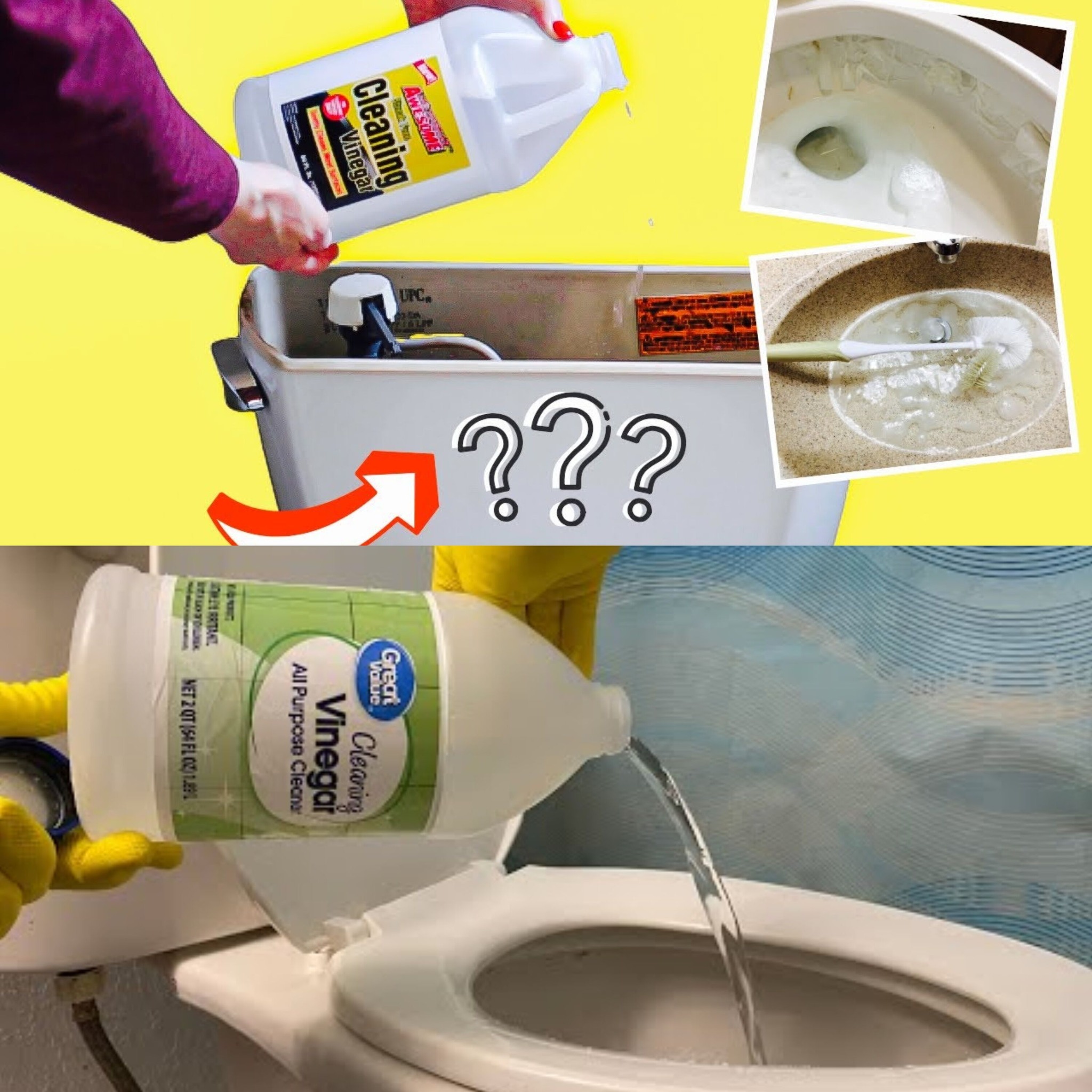ADVERTISEMENT
### The Power of Vinegar: Why It Works
Before diving into my personal experience, let’s take a look at why vinegar works so well as a toilet cleaner. Vinegar, specifically white distilled vinegar, is one of the most versatile and affordable cleaning agents you can use around the house. It’s a mild acid (acetic acid), which means it can break down stains, remove mineral deposits, and eliminate odors. This is why it works wonders for toilet cleaning.
#### **Key Benefits of Using Vinegar for Toilet Cleaning:**
1. **Kills Bacteria**: Vinegar has natural antibacterial properties that help to disinfect surfaces. It can help eliminate harmful germs and bacteria found in your toilet.
2. **Removes Hard Water Stains**: If you have hard water, you’ve probably noticed those stubborn mineral deposits in the bowl. Vinegar helps break down and dissolve these stains.
3. **Natural and Non-Toxic**: Unlike many commercial cleaners, vinegar is non-toxic, making it safe for both humans and pets. It’s also eco-friendly since it doesn’t contain any harmful chemicals.
4. **Deodorizes**: Vinegar naturally neutralizes odors, leaving your bathroom smelling fresh without the need for artificial fragrances.
Now that we know why vinegar is so effective, let’s move on to my experience using it in the toilet.
—
### My Experience: Poured Vinegar into My Toilet – Here’s What Happened!
A few weeks ago, I decided to give vinegar a try as a toilet cleaner. I had tried a few different commercial cleaners, but I was still seeing hard water stains and buildup that wouldn’t go away. Plus, I was looking for a more natural and cost-effective solution. So, I grabbed a bottle of white vinegar from my kitchen and got to work.
#### **Step 1: Preparation**
The first step was simple. I gathered all my cleaning supplies, which included:
– White distilled vinegar (about 2 cups)
– A toilet brush
– A pair of rubber gloves (just in case)
– A spray bottle (optional for easy application)
I made sure the toilet was not recently used so that it was dry and ready to be cleaned. I then poured about 2 cups of white vinegar directly into the toilet bowl. I made sure to cover the water line and the sides of the bowl. Since vinegar is a mild acid, I wasn’t worried about harming the porcelain.
#### **Step 2: Letting it Sit**
Once the vinegar was in the toilet, I left it to sit for about 30 minutes. This waiting time was crucial, as the vinegar needed to dissolve any mineral deposits and work its magic on the stains. While waiting, I went about other tasks in the bathroom, but it was hard not to wonder if the vinegar would really make a noticeable difference.
#### **Step 3: Scrubbing with a Toilet Brush**
After the 30 minutes were up, I grabbed my toilet brush and started scrubbing the sides of the bowl. The vinegar had already started to break down the grime, and I could tell that the stains were loosening. The brush glided more easily than usual, and I didn’t need to apply much pressure at all.
As I scrubbed, I noticed that the hard water stains, which usually require aggressive scrubbing, were starting to fade. The buildup on the rim and the bottom of the bowl seemed to dissolve as I moved the brush around. I made sure to scrub all areas of the toilet, paying extra attention to the stains that had been present for weeks.
#### **Step 4: Flushing**
After a good scrub, I flushed the toilet, watching the water swirl and the vinegar rinse away the grime. The toilet bowl was noticeably cleaner, and the hard water stains had significantly lightened. I could hardly believe it—vinegar had done what no commercial cleaner had been able to do!
The bowl was sparkling clean, and there was no chemical smell lingering in the air, just a faint, fresh scent. I was impressed by how well this simple kitchen staple had worked.
For Complete Cooking STEPS Please Head On Over To Next Page Or Open button (>) and don’t forget to SHARE with your Facebook friends
